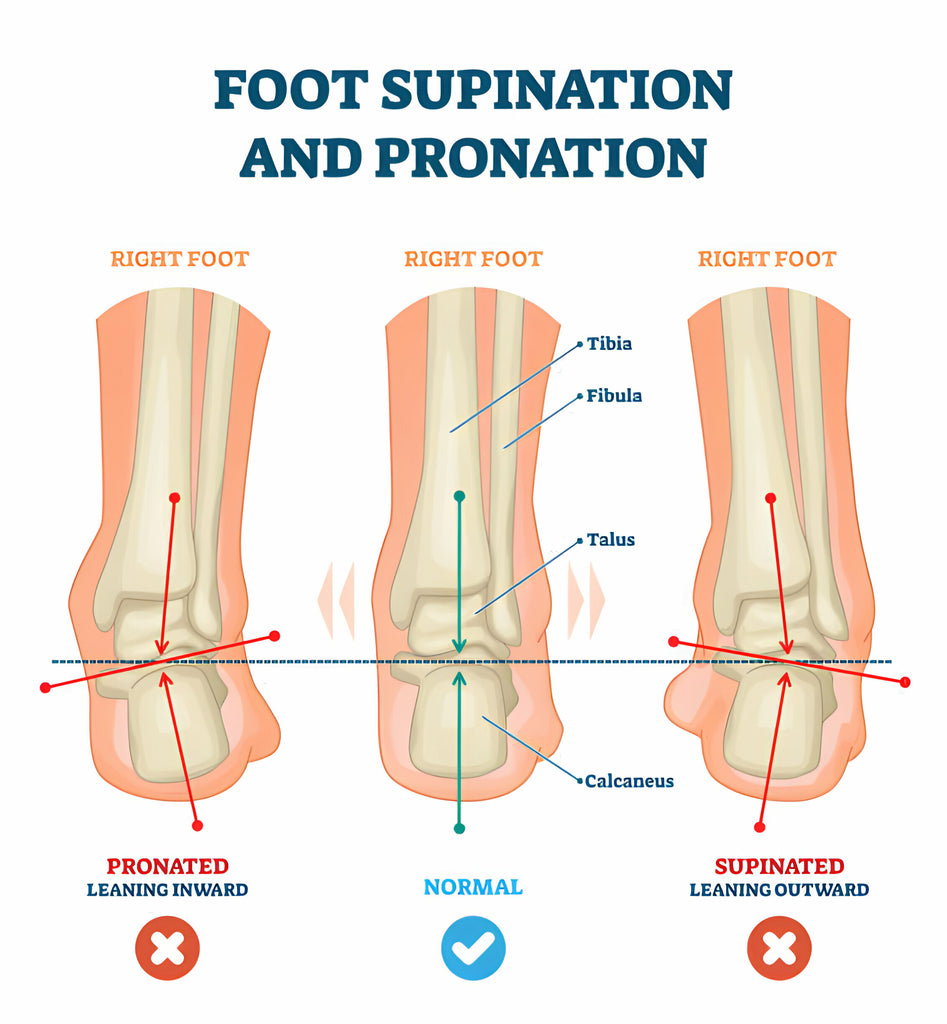For many, foot pain is a persistent and unwelcome companion, disrupting daily activities and impacting overall well-being. While the causes of foot pain can be diverse, orthotics have emerged as a popular solution, offering pain relief and improved mobility. But how exactly do these seemingly simple inserts work their magic? This article delves into the science behind orthotics, exploring how they influence the body's mechanics and ultimately enhance your health and movement.
Understanding the Foundation: Biomechanics and Foot Anatomy
The human foot is a marvel of biomechanics, comprising 26 bones, 33 joints, and over 100 muscles, tendons, and ligaments. This intricate structure is crucial in supporting our weight, propelling us forward, and maintaining balance. However, various factors, including genetics, injuries, and lifestyle choices, can disrupt this delicate balance, leading to misalignments and pain.

One of the key concepts in understanding orthotics is pronation. This is the natural inward rolling motion of the foot during walking and running. While pronation is essential for shock absorption and stability, excessive pronation (overpronation) can cause the foot to collapse inwards, placing undue stress on specific areas and leading to pain in the feet, ankles, knees, and even the lower back.
How Do Orthotics Work? Addressing Misalignments and Promoting Stability
Orthotics function by providing targeted support and guidance to the foot. They are typically constructed from various materials, including plastic, foam, and leather, and are custom-molded to fit the individual's unique foot shape and biomechanics.
Here's how orthotics work to address misalignments and promote stability:
- Arch support: Orthotics can be designed to provide arch support, which helps control excessive pronation and redistribute weight distribution across the foot. This can alleviate pain in the arches, heels, and other areas.
- Alignment correction: By gently guiding the foot into a more neutral position, orthotics can help correct biomechanical imbalances and improve overall alignment. This can not only reduce pain but also enhance balance and stability.
- Pressure redistribution: Orthotics can help distribute pressure more evenly across the foot, reducing stress on specific points and preventing the formation of calluses and other foot problems.
The Science Behind the Benefits: Research and Evidence
The effectiveness of orthotics in improving foot health and mobility is backed by scientific research. Studies have shown that orthotics can:
- Reduce foot pain: Numerous studies have demonstrated the efficacy of orthotics in alleviating pain associated with plantar fasciitis, heel pain, and other foot conditions.
- Improve balance and stability: Research suggests that orthotics can enhance balance and stability, particularly in individuals with osteoarthritis or post-surgical recovery.
- Enhance athletic performance: Studies in athletes have shown that orthotics can improve running efficiency and reduce the risk of overuse injuries.
It's important to note that while research supports the benefits of orthotics, individual experiences may vary. Consulting a qualified healthcare professional, such as a podiatrist or physical therapist, is crucial to determine if orthotics are the right solution for your specific needs and to ensure proper fitting and use.
Beyond the Feet: The Ripple Effect of Improved Mobility

The benefits of orthotics extend beyond the feet, impacting overall health and well-being. When your feet are properly aligned and supported, it can have a positive ripple effect throughout your body. Improved foot biomechanics can lead to:
- Better posture: Orthotics can help promote proper alignment of the feet, ankles, and knees, which can translate to improved posture throughout the body. This can alleviate pain in the back, neck, and shoulders.
- Reduced joint stress: By correcting imbalances and distributing pressure more evenly, orthotics can help reduce stress on joints throughout the lower body, potentially preventing future injuries.
- Enhanced mobility and function: Improved foot health and biomechanics can lead to increased mobility and function, allowing you to participate in daily activities and exercise with greater ease and confidence.
Conclusion
Orthotics are not simply shoe inserts; they are biomechanical tools that can significantly improve foot health, mobility, and overall well-being. By addressing misalignments, promoting stability, and reducing pain, orthotics can help you move with greater ease, confidence, and enjoyment. If you are experiencing foot pain or limitations in your mobility, consulting a healthcare professional to discuss the potential benefits of orthotics is a step towards a healthier and more active you.
























































